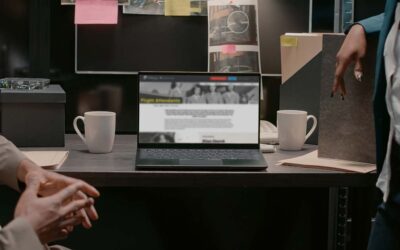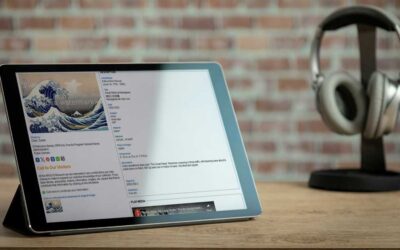Museum Grant Pitfalls—Know & Avoid Them

Rachael Cristine Woody
Through working with granting agencies, providing grant reviews, and writing grants with museums and archives, I’ve seen a specific set of mistakes museum professionals make all the time. I’ve even made some of them myself. I want museums to be stronger applicants and am here to share the most common museum grant pitfalls to know and avoid.
1. Lengthy, Jargon-Filled Titles
The title is an introduction to the grant application and sets the tone for grant reviewers. The title should convey importance, catch attention, and be easy to understand. Many museum professionals, including myself, have fallen into the trap of really long, jargon-filled titles that are three lines long with colons and commas. While such a title may convey a lot of information, it sets a less than enthusiastic tone for the grant reviewer.
Here’s a real-life title I constructed during my early museum grant writing years: From the Cradle of Civilization: Preservation using Multi-Dimensional Digitization of Squeeze Impressions in the Ernst Herzfeld Collection. The title has jargon, a colon, and is way too long to comprehend on the first read through.
Here’s how it could’ve been better: Preserving Ancient Materials with 3D Imaging. The title is clear in intent and concise—and the reader can fully comprehend what you’re saying from the first read.
2. No Clear Solution
Identifying needs within our own museum is usually easy. Articulating a clear solution for those needs? Not so easy. For a grant application to be competitive a stated need must be followed with a well thought out and sustainable solution. Merely stating a museum need and asking for money to answer the need does not make for an attractive grant application. It shows little work on the museum’s end to implement a permanent solution.
3. No Evidence
Museums unfortunately forget what’s obvious to them is not obvious to others. A grant application stating a museum need with no evidence will immediately disqualify the grant application. Reviewers want to see evidence, letters of support from related stakeholders, documentation of the need—anything that will help substantiate the case. If evidence can be tied into larger cultural movements and national context you’ll get bonus points. Maybe not literal bonus points to your score, but it will help elevate your need as legitimate and memorable.
4. No Accountability Measures
You’ve stated the need, solution, and evidence for why the need should be met. Now how are you going to measure success? This is the most commonly overlooked area on a grant application. I’ve seen museums provide subpar information or skip addressing it completely. Stating a solution with no way (or intention) of measuring will severely impact the validity of the grant application. Think about what success looks like. Was the need solved? Were there other benefits? Think of qualitative and/or quantitative metrics to use and communicate those metrics in the grant application.
5. Why Should We Care?
This is the most universal museum pitfall. Every museum has wonderful collections that are unique and impactful. We’re all unicorns, and too often I see museums rely on “specialness” to convey importance in the grant application instead of directly addressing why people should care about the museum need.
6. Made Up Budgets and Timelines
It’s usually obvious to grant reviewers when museums make up budget numbers and timelines. Clue number one is when a museum doesn’t provide any justifications for how they arrived at those numbers. For example: a museum is going to run a digitization project and wants funding for temporary staff to do the digitization and cataloging. The museum will need to figure out how long it will take to digitize each item, perform corrections, catalog, and upload. As an experienced professional in this area, and as a grant reviewer, I expect to see an equation for how the museum arrived at the staff time it wants funded. If reviewers don’t see an equation and/or the number of hours appear misinformed, they will be extremely hesitant to recommend the grant application for funding.
7. Why You?
Not anchoring the museum project in a way that demonstrates why they’re the best for the job can be a major museum pitfall. Museums are filled with professionals who have education, skills, and experience. Use those to make the pitch. Show the museum’s expertise and ability—and it’s a major bonus if you can point to related projects where you’ve been successful. Museum projects are often very similar. Making the case for why your museum should be doing this project can mean the difference between zero and winning.
If you avoid these “Seven Sins” of grant application, your museum will be a stronger applicant.

Rachael Cristine Woody
Stan writes regularly for Lucidea’s Think Clearly blog. Subscribe to ensure you never miss a post with engaging information for KM practitioners and special librarians! Learn about Lucidea’s Presto, SydneyDigital, and GeniePlus software with unrivaled KM capabilities that enable successful knowledge curation and sharing.
Similar Posts
Exploring Self-Determinate Multiple Pathways: An Example of Digital Storytelling
Discover how self-determinate multiple pathways offer flexible interactive storytelling in museum exhibits. Learn from the Tenement Museum’s ‘Your Story Our Story.’
Digital Museum Storytelling Example: A Look at Self-Determinate Linear Pathways
Self-determinate characteristics on a linear pathway go beyond brief sidebar topics and instead offer alternative ways to navigate the linear pathway.
Digital Storytelling in Museums: The Prescriptive Linear Pathway in Action
Rachael Woody emphasizes that storytelling is key to engaging audiences with collections. One effective approach? The prescriptive linear pathway—a simple yet powerful method for guiding visitors through digital exhibits.
The CMS Digital Exhibit and Story Pathways
Digital exhibits provide powerful ways to engage audiences but choosing the right story pathway is key. Explore how different exhibit structures—linear vs. multi-pathway—shape the visitor journey.





